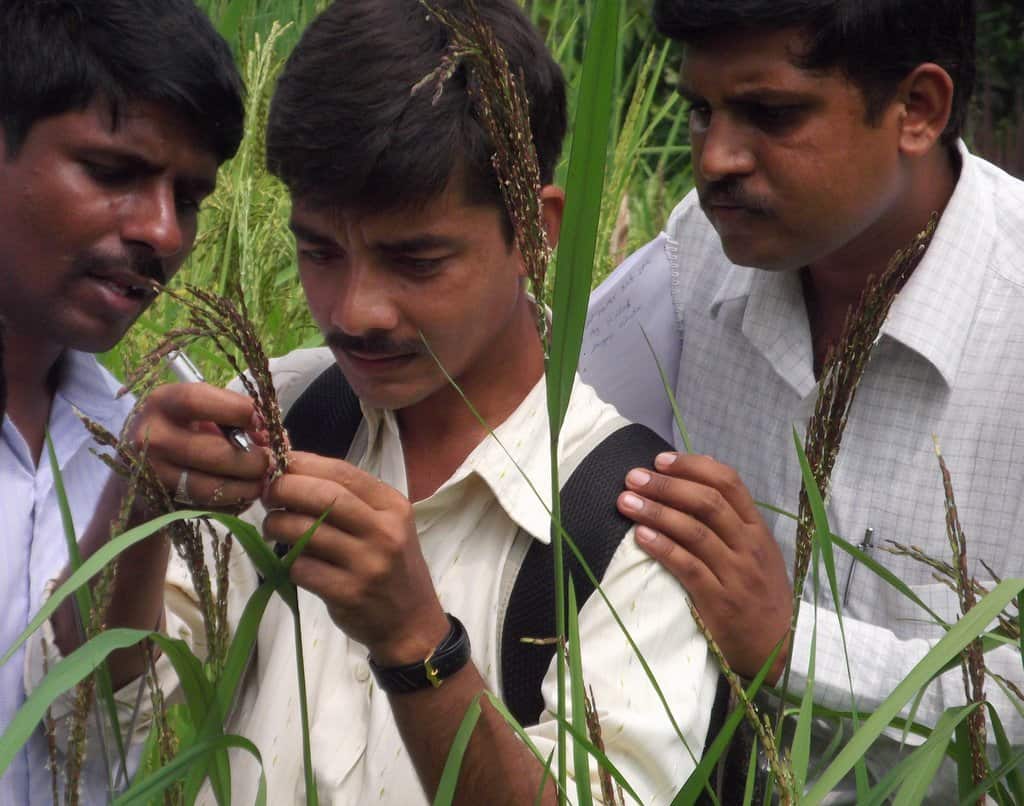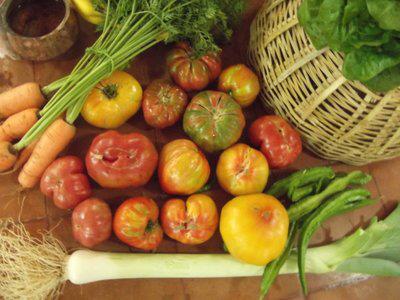In 2002-03, G Krishna Prasad, weekend farmer and Director of the organic farmers’ collective Sahaja Samrudha, spotted a plot growing ragi in Bengaluru’s Lavelle Road. Older Bengaluru residents like him still have a special affinity for ragi. The sight took Krishna back to the 80s when he had surveyed rural Bengaluru to document the traditional akadi system of growing multiple crops simultaneously.
“The food system in Bengaluru was centred around the ragi-based cropping pattern,” Krishna says. Ragi was not grown alone, but “along with mustard, jowar, tur and castor as the intercrops. Mustard and castor (that are used to make oil) were the cash crops. This system was like insurance for the farmers,” he says. While the system of growing more than one crop to safeguard against losses has survived the test of time, the crops themselves have changed.
The locally-grown gourds and tubers have long been replaced by the more expensive ‘English vegetables’ like cauliflower and cabbage. Millet, for an average urban citizen, is now synonymous with ragi, and not other traditional varieties like Navane or Samai. And one thinks of toor dal while listing legumes, not avaray or tovaray.
Krishna has worked closely with and highlighted the native knowledge of seed savers and breeders, so as to conserve traditional seed varieties. In 2000, a group of weekend farmers like him who owned land around Bengaluru came together to raise awareness about indigenous seeds.
“When we saw that people were showing interest, we started participating in the Lalbagh fruits and vegetables exhibition,” he says. “Then from 2009 to 2014, we organised rice and millet melas to promote indigenous varieties.” Sahaja Samrudha now works with 7000 organic farmers, seed savers, seed producers and farmer-breeders from 20 districts of Karnataka.

What did Bengaluru eat 200 years ago?
In 1800, Dr Francis Hamilton Buchanan, a British surgeon and botanist, took his coterie across the Mysore Kingdom to record everything he saw: from agriculture and commerce, to antiquity. The surveys resulted in a comprehensive three-volume publication named ‘A Journey from Madras through the Countries of Mysore, Canara and Malabar’.
During a tour of South Karnataka and villages in and around Bangalore, Buchanan painstakingly noted crops, communities and agricultural processes. He found that many varieties of rice were cultivated on watered soil, while ragi dominated the dry fields.
“The crop of ragy”, he wrote, “is by far the most important of any raised on dry fields, and supplies all lower ranks of society with their common food.”
Buchanan described ragi as the food of the masses, but now, ragi is no longer the food of the “lower rank” alone. In fact, it’s embraced by the elite urban consumer who is focussed on health, keen on remembering and preserving family recipes, informed about local varieties, and a patron of the local millet cafe.
Buchanan had described the akadi system, too. According to him, ragi – or its three varieties, Cari, Kempu and Huluparia – was never grown alone, but always with the legumes avaray and tovaray, and other beans. Back then, Buchanan found, farmers grew ragi with the leguminous crops, because if ragi failed, the legumes flourished and “if ragi succeeded, the leguminous plants were oppressed by it.”
The following table from Buchanan’s book indicates several varieties of legumes, millets, paddy, sesame, etc., cultivated then.
| Crop | English description | Yield/Acre in Bushels (One Bushel = 1.18 sq ft) |
|---|---|---|
| Ragy | Ragi | 23.35 |
| Avaray | Type of Beans | 0.889 |
| Tovaray | Red Gram | 0.889 |
| Harica | Small Millet | 15.56 |
| Novanay | Small Millet | 15.56 |
| Shamay | Small Millet | 15.56 |
| Chica Cambu | Variety of paddy | 15.56 |
| Jolla | Sorghum | 15.56 |
| Hurali | Horse Gram | 15.56 |
| Huts Ellu | Niger Seeds | 1.12 |
| Wullu Ellu | Sesame Variety | 1.334 |
Ragi may have declined in cultivation and consumption, but it has still recorded a stronger revival than other millets— especially for the discerning urban customer. But urbanites today might have never tasted, or never even heard of, the other varieties listed by Buchanan.
| Traditional vegetable and fruit gardens |
|---|
| While millets and legumes from fields around Bengaluru found their way to the city’s markets, some farming used to happen within the city too. Buchanan had identified four types of totas or gardens in the Mysore kingdom: * Huvina tota or flower gardens * Tarkari totas or kitchen gardens * Taynagana totas or orchards * Yellay totas or betel-leaf gardens The kitchen gardens, according to Buchanan, were built for family use and were costlier than rice fields to maintain. Apart from the still-popular vegetables such as capsicum, onion, garlic, radish, sweet potato, turmeric, and ginger, people also grew amaranthus, maize, avarakkai beans, and ash pumpkin. The orchards at Palace Grounds and other areas grew jamun, gooseberry, tamarind along with orange, guava, jackfruit, and so on. Until recently, old Bengaluru residents like Krishna had also spotted several avocado or butter fruit trees in the city. |
When and how did Bengaluru start eating differently?
In a 2016 (working) paper, ‘What we ate then and what we eat now’, the authors conducted a qualitative study among 116 grandmothers to understand how food habits have changed. “Among cereals, nutritious millets such as barley and pearl millet no longer form a part of their (those surveyed) diet,” they found.
“Apart from ragi and wheat, the main staple is now different forms of rice. Pulses such as black sesame, horse gram and black gram no longer figure in the diet, although they are all cheap and rich sources of protein,” found the study. Beans, especially avarakkai or broad beans, despite the high nostalgic value among the older, are forgotten as well.
When it comes to vegetables, the authors found, the choice used to be traditional with locally-grown produce such as gourds, roots and tubers. “But now, the preference is for what are termed ‘English vegetables’ such as cauliflower, cabbage and tomatoes. These are more expensive and not part of the traditional diet,” the study said.
The move to ‘English or European vegetables’ started with the fall of the Mysore kingdom when the (now called) Lalbagh Gardens were appropriated by the British East India company. “In 1802, the company appointed German botanist Benjamin Heyne (Buchanan’s assistant on his Mysore surveys), who introduced several plants in the garden, “while introducing the cultivation of European vegetables to the masses”, Mathur and Da Cunha write.

In his book, Tracts Historical and Statistical on India, Heynes notes that potatoes were introduced to Bangalore by Colonel Cuppage and then taken to the masses by him.
“The Mussulmen and Hindoos,” he wrote, “with the exception perhaps of the Bramins, eat them with great eagerness, and seem to give them the preference to their yams and sweet potatoes.”
Fruits like apples, peaches, grapes were brought by European botanists from Persia, Isle of France, and England, respectively. Tomatoes, too, came around this time. But according to Krishna, a variety of cherry tomatoes named Chaprabanne in Kannada, are grown in rural areas. “And they”, he adds, “are much more suitable to sambar and rasam than the varieties in the market.”
When the Green Revolution was introduced in India in the 1960s, scientists were keen on developing high-yielding crops. In Karnataka, Dr Ragi Lakshmanaiah cross-fertilised the finger millet and developed the Indaf variety. “Indaf escalated the ragi production in Karnataka but we lost our traditional varieties,” Krishna says.
Back then, the seed supply, too, was community-driven through localised banks run by seed savers. “But when seeds began to be subsidised and sold through the seed co-operatives, corporations and universities, people gave up their traditional seeds.”
Five decades later, our farms and plates look very different. Current food habits have also evolved. But the revival of ragi through local cafes and organisations like Sahaja Samrudha show food movements are cyclic. Perhaps bringing out the dusty Buchanan surveys can help revive the legumes and other crops as well.
[The author would like to thank Vijay Thiruvady for reading and research recommendations.]
This article is part of a series on ‘Bengaluru’s Ecosystems and Biodiversity‘. This is a joint project with Mongabay India and supported by the Bengaluru Sustainability Forum (BSF)
Diversity of crops is necessary for the health of people and soils. We are missing both. ‘Lowly’ crops are as necessary as the ‘higher’ crops.
An informative article, bring back memories of childhood.
Very informative article. Didn’t know that Cabbage/Cauliflower and Potatoes(replacing healthy sweet potatoes and Yams) were brought from abroad. Good to know that other little millets were also being grown. DO we get native ragi seeds? Would like to get hold of Chaprabanne(is it different from “Naati Tomatoes). Even the snake gourd that we get these days don’t look like a snake nor has the original smell 🙁
Infant complementary food is all ragi and millets in Karnataka thankfully
Thanks a ton for an exhaustive article on the subject .. The Author deserves kudos !! But all is NOT LOST in the sense that a few of the well-known Organisations add these millets like ragi, jowar, etc in the wheat flour & biscuits !!